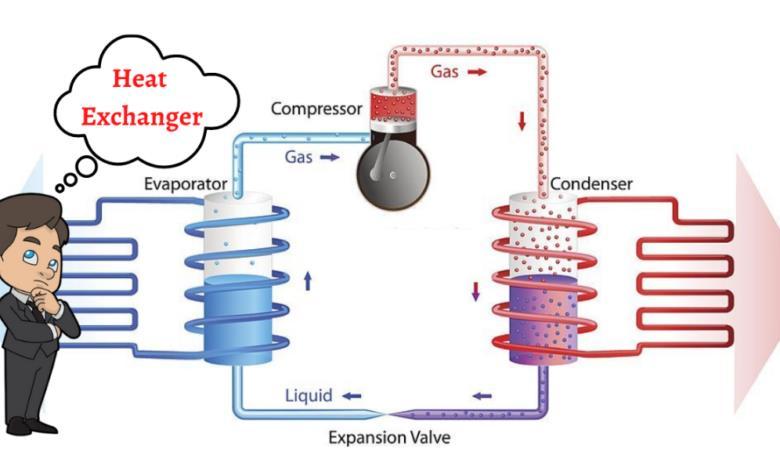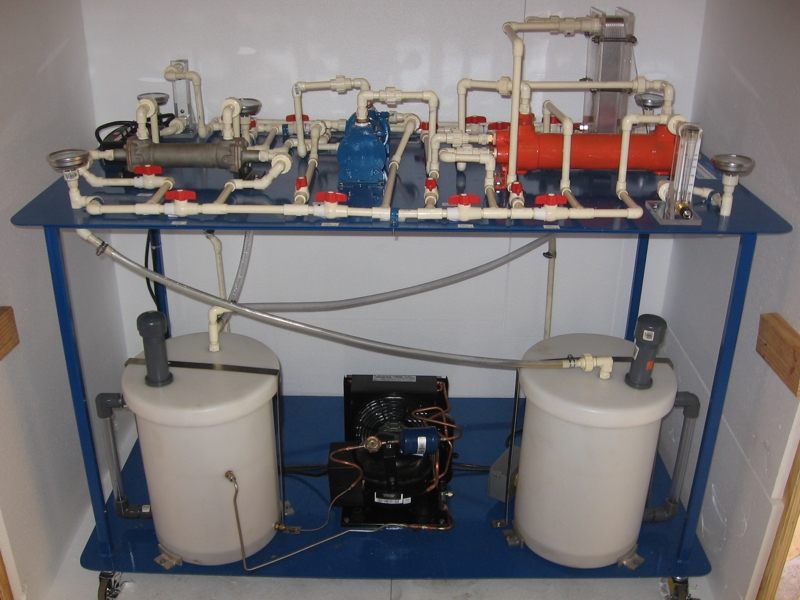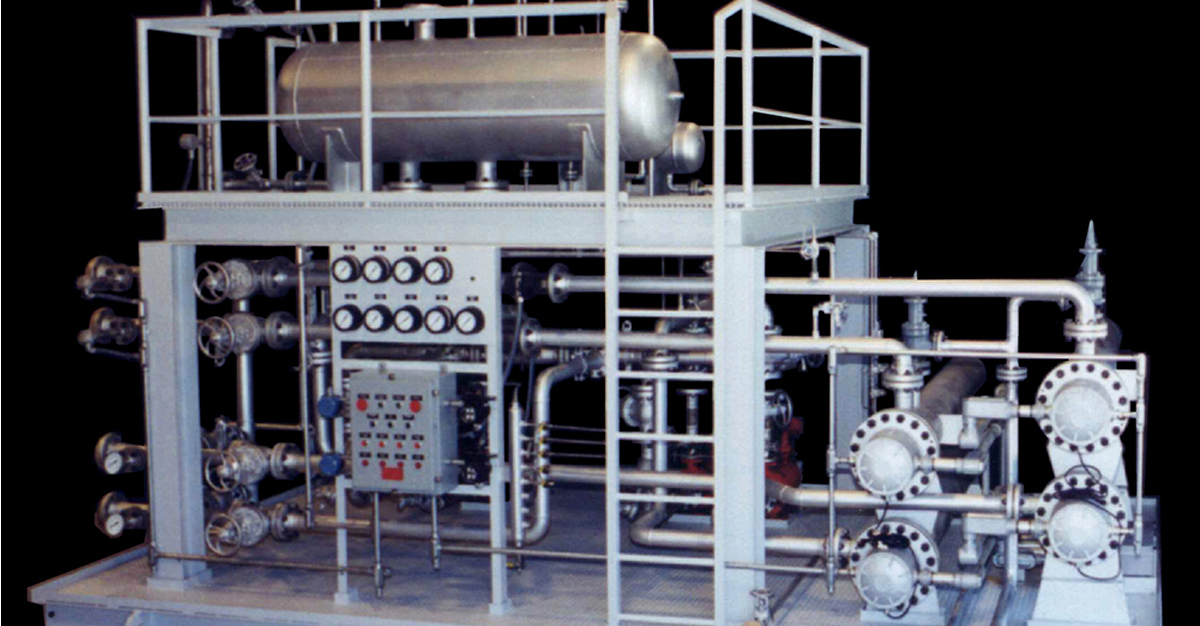Emerging Innovations Shaping the Future of DVS Heat Transfer Systems
Wiki Article
The Function of Heat Transfer Equipments in Sustainable Energy Solutions for the Future
Heat transfer systems are necessary in the quest for lasting energy options. They enhance thermal power administration, improving the effectiveness of eco-friendly modern technologies. By employing systems like convection, conduction, and radiation, these systems lessen power losses. Their duty in solar thermal and geothermal applications is specifically considerable. As developments arise, the potential for more innovations elevates vital inquiries about future energy techniques. What developments will form the landscape of lasting energy?Understanding Heat Transfer Equipments

The Importance of Thermal Energy Monitoring
Reliable thermal power management is essential for taking full advantage of power efficiency and decreasing waste in different systems. By controling temperature level and maximizing Heat transfer procedures, companies can substantially reduce power intake and functional costs. Effective management entails the execution of innovative technologies and methods that monitor and regulate thermal conditions within systems, making sure that power sources are utilized effectively. Furthermore, correct thermal power management contributes to minimizing greenhouse gas exhausts, aligning with global sustainability objectives. It also boosts system dependability and efficiency, bring about boosted item top quality and longer equipment life-span. Ultimately, prioritizing thermal energy management is a vital step towards creating much more sustainable energy services and promoting an accountable approach to power intake in property and commercial contexts.Applications of Heat Transfer in Renewable Energy
While various sustainable power sources assure sustainability, the effective application of Heat transfer plays an essential role in their effectiveness. In wind energy systems, Heat transfer is used for wind turbine component cooling, improving performance and longevity. Geothermal power counts on efficient Heat exchange between the earth's subsurface and the fluid flowing in the system, optimizing energy removal. Biomass power processes additionally take advantage of Heat transfer, as it aids in converting organic products right into usable fuel with pyrolysis and gasification. Furthermore, in hydropower, maintaining ideal temperatures in storage tanks can enhance energy result. Each of these applications shows the essential relevance of Heat transfer systems in boosting eco-friendly energy technologies, ultimately adding to a much more lasting energy future.Enhancing Solar Thermal Power Performance
As solar thermal power systems remain to evolve, boosting their performance has come to be necessary for taking full advantage of energy output. Advances in Heat transfer innovations, such as boosted thermal storage space products and innovative Heat exchangers, play a substantial role in boosting performance. By making use of advanced products that have remarkable thermal conductivity, systems can move and record Heat better. Furthermore, integrating radar that comply with the sun's path warranties that collectors receive optimal solar direct exposure throughout the day. Using nanotechnology in solar absorbers can further enhance power absorption rates. Incorporating computerized control systems assists regulate temperatures and manage energy distribution efficiently, leading to lowered losses and enhanced overall system efficiency. These enhancements lead the way for even more lasting solar thermal power options in the future.Geothermal Home Heating: A Lasting Solution
Geothermal heating provides a viable alternative for lasting energy, providing significant environmental advantages via minimized greenhouse gas exhausts. Its performance and cost-effectiveness make it an eye-catching choice to typical furnace. Obstacles related to implementation needs to be resolved to optimize its possible effect.Ecological Benefits of Geothermal
Traditional home heating techniques contribute significantly to greenhouse gas emissions, geothermal heating presents an engaging choice that reduces ecological influence. By utilizing the Earth's interior Heat, geothermal systems utilize an eco-friendly power resource, substantially minimizing reliance on nonrenewable fuel sources. This approach generates very little carbon exhausts, making it a cleaner choice for business and residential heating. Furthermore, geothermal systems promote energy effectiveness, as they call for less energy compared to traditional heater. DVS Heat Transfer Systems. The utilization of geothermal power additionally helps in decreasing air contamination, improving neighborhood air top quality and public wellness. As a lasting solution, geothermal home heating sustains environment change reduction efforts, placing itself as a vital part in the shift towards a greener futureEffectiveness and Cost-Effectiveness
Exactly Full Report how does geothermal heating measure up in regards to efficiency and cost-effectiveness compared to conventional heater? Geothermal heating demonstrates superior efficiency, frequently accomplishing a coefficient of efficiency (POLICE OFFICER) of 3 to 5, implying it produces three to 5 devices of Heat for each system of power taken in. This performance equates right into lower operating expense, specifically in regions with stable geothermal sources. First installment prices can be higher than traditional systems; nonetheless, long-term financial savings on energy bills and lowered maintenance costs can counter these upfront financial investments. Additionally, lots of governments incentivize geothermal systems via refunds and tax credit histories, enhancing their cost-effectiveness. Overall, geothermal home heating becomes a lasting and financially practical choice to more standard home heating options.Implementation Obstacles and Solutions
Various obstacles can hamper the widespread application of geothermal heating unit, despite their clear benefits as a lasting power solution. High initial setup costs commonly hinder homeowners and investors, making financing a substantial barrier. In addition, the geographical restrictions of suitable geothermal websites limit ease of access in certain areas. Neighborhood regulations and permitting procedures can additionally complicate project advancement, bring about delays. Furthermore, public recognition and understanding of geothermal systems continue to be low, impeding approval. To resolve these challenges, targeted education and learning projects can improve public understanding, while government motivations might minimize financial burdens. Working together with neighborhood authorities to enhance regulations may promote smoother job approvals, ultimately promoting the fostering of geothermal home heating as a feasible, lasting energy choice.Innovations in Heat Transfer Technologies
Technologies in Heat transfer technologies play an essential function in improving power effectiveness and sustainability. Advanced Heat exchangers and phase change materials go to the leading edge of these advancements, supplying significant enhancements in thermal monitoring. These innovations not only optimize power usage yet likewise add to minimizing ecological effect in different applications.Advanced Heat Exchangers
Advanced Heat exchangers play an essential function in improving energy effectiveness across different applications in lasting power services. These tools assist in the transfer of Heat between two or more liquids, significantly reducing energy usage in procedures such as commercial home heating, air conditioning, and power generation. Technologies in products and design, such as making use of nanofluids and small arrangements, have brought about enhanced thermal performance and reduced size requirements. Additionally, advancements in electronic tracking and control systems allow for maximized operation, additional boosting performance. By reducing waste Heat and making best use of power recuperation, advanced Heat exchangers add to lower carbon impacts and support the shift toward environmentally friendly innovations. Their proceeded growth is vital for accomplishing international power sustainability objectives.
Phase Modification Materials
The combination of phase modification products (PCMs) right into Heat transfer innovations stands for a considerable improvement in power management and efficiency. PCMs absorb and release thermal power during their phase adjustments, making it possible for efficient temperature regulation in structure materials and energy systems. By saving excess Heat during peak periods and launching it when demand rises, PCMs add to pack shifting and power preservation - DVS Heat Transfer Systems. This capacity improves the efficiency of renewable resource systems, specifically in solar thermal applications. Additionally, PCMs can improve the thermal comfort of indoor atmospheres, minimizing dependence on conventional heating and cooling down techniques. As innovations in PCM formulations proceed to arise, their function in lasting power services is positioned to expand, offering promising avenues for future study and application
Future Prospects for Heat Transfer in Lasting Power
As the need for lasting energy remedies remains to climb, the role of Heat transfer systems is coming to be increasingly essential fit future innovations. Technologies in products and layouts are anticipated to improve effectiveness in Heat transfer, minimizing power losses in different applications. The integration of innovative thermal storage space systems, such as stage modification products and thermochemical storage, will make it possible for far better monitoring of power resources. Research study read this right into nanofluids and biomimetic Heat exchangers may additionally maximize thermal efficiency. The fostering of clever modern technologies will enable for real-time monitoring and flexible control of Heat transfer processes. These developments are poised to considerably add to the overall effectiveness and sustainability of energy systems, leading the way for an extra energy-efficient future.Often Asked Questions
Exactly How Can People Implement Heat Transfer Systems at Home?

People can implement Heat transfer systems in your home by setting up energy-efficient appliances, using radiant heat, and optimizing insulation. These steps boost energy effectiveness, minimize expenses, and advertise sustainable practices in residential environments.

What Are the Costs Connected With Installing Heat Transfer Solutions?
The prices connected with mounting Heat transfer systems differ commonly, usually incorporating devices, installment labor, and maintenance. Elements such as system type, home dimension, and neighborhood guidelines greatly influence the overall expenditure entailed.Are There Government Rewards for Heat Transfer System Installations?
Government incentives for Heat transfer system installations differ by region and can consist of tax obligation credits, gives, and discounts. These economic advantages aim to urge fostering, inevitably advertising power performance and decreasing environmental impact within neighborhoods.Exactly How Do Heat Transfer Equipments Effect Power Expenses?
Heat transfer systems especially affect energy expenses by optimizing power performance. By improving the transfer of Heat, these systems lower energy usage, resulting in reduced energy expenses and developing a much more lasting method to power management.What Upkeep Is Required for Heat Transfer Systems?
Maintenance for Heat transfer systems consists of regular examinations, cleaning of components, inspecting liquid levels, guaranteeing correct insulation, and replacing worn parts. These jobs aid keep effectiveness, stop malfunctions, and prolong the system's operational life expectancy.These systems facilitate the motion of news thermal power from one medium to one more, making it possible for the transfer of Heat for energy, heating, or air conditioning generation objectives. Geothermal power depends on efficient Heat exchange between the earth's subsurface and the fluid circulating in the system, making best use of energy extraction. Furthermore, geothermal systems advertise power efficiency, as they call for much less power compared to traditional heating systems. Advanced Heat exchangers play a crucial role in improving power effectiveness across various applications in sustainable power remedies. Heat transfer systems notably influence energy costs by optimizing energy effectiveness.
Report this wiki page